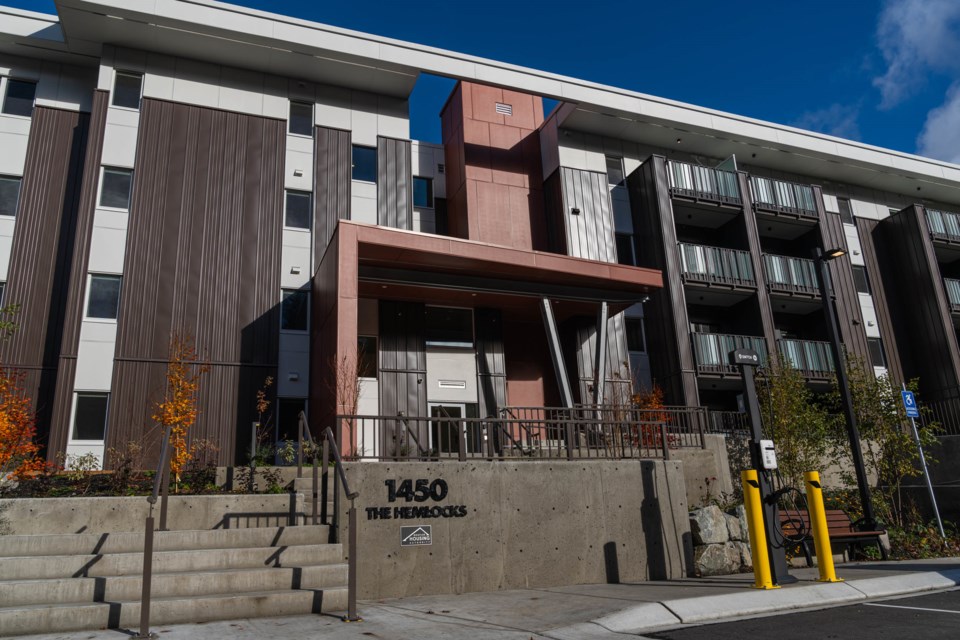It’s no secret Whistler, like so many tourism-based communities across Canada, is in constant need of housing, and a new provincially mandated report estimates just how much more housing the resort will require to meet demand over the next two decades.
At , elected officials got a look at the Resort Municipality of Whistler’s (RMOW) , an appendix to a 2022 housing report Victoria required local governments to compile.
This latest report relies on developed at the University of B.C. to calculate Whistler’s current and anticipated housing needs in the next five and 20 years. In all, the report estimated Whistler will require 1,572 new housing units in the next five years, and 5,639 in the next 20 years.
Even for a resort community that has built hundreds of new dwelling units in recent years and a municipality that has long counted affordable housing as , Whistler has a steep path ahead.
“I know that we have our foot on the gas with housing, so giddy up. Let’s go,” said Councillor Jessie Morden.
The need for new housing will undoubtedly strain limiting the number of bed units in the resort that has been baked into Whistler’s Official Community Plan (OCP) since the municipality’s formation in 1975.
“It’s hard for me to compare Whistler with a sprawling suburb like Surrey or Burnaby. We are very much a planned community, and we have to ensure that our carrying capacities are very well matched,” said Coun. Arthur De Jong. “I guess we have a lot of work to do, because when I first stepped in on council, the OCP was the lens, and I see it potentially cracking through this.”
Although Whistler is , RMOW staff were quick to note new housing units won’t necessarily correspond with the same rise in population.
“Each unit won't necessarily result in an increase in population, because there's going to be a redistribution of population as people are able to access affordable housing,” explained municipal planner Joanna Rees.
The provincial methodology broke down housing needs into six components that, tabulated together, made up the total number of units Whistler will require. To meet its extreme core housing need, referring to private households spending more than half of their income on housing, the report found Whistler will require 68.34 new units in the next five years, and 273.37 in the next 20 years. To meet its supply of units to reduce homelessness, Whistler requires 17.72 new units in the next five years, and 35.45 in the next 20. To meet the supply of units needed to address “suppressed household formation”—defined as households that were unable to form between 2006, a time when supply was more available, and present, due to a constrained housing environment—Whistler requires 175.48 new units in the next half decade, and 701.92 over 20 years.
To meet the supply of units needed to meet the household growth of an increasing population, Whistler needs 886.03 new units over five years, and 2,931.23 over 20 years. To meet its supply of units needed to meet a minimum three-per-cent rental vacancy rate, considered a healthy rate in a functional housing market, Whistler will need 10.27 additional units in the next five years, and 41.07 over the next 20. Finally, to meet the supply of units needed to address local demand, intended to address households who require or prefer housing with certain characteristics, such as being close to jobs and schools, Whistler needs to add 414.08 units in the next five years, and 1,656.32 in the next two decades.
The RMOW was also required as part of the interim report to include a statement about the need for housing in close proximity to transportation infrastructure.
“New purpose-built housing, especially employee rental housing, should be prioritized in locations with close proximity to transportation infrastructure that supports walking, rolling, cycling, alternative forms of active transportation, and public transit, and required to promote community livability, achieve climate-related objectives and reduce traffic congestion,” the statement read.
Municipalities must update their OCP and zoning bylaws by Dec. 31, 2025 to accommodate the required number of future housing units. As RMOW staff noted, Whistler’s 20-year need is already accommodated in its zoning bylaw. Additionally, the OCP must include housing policies for each class of housing need identified in the report. Staff plan to present an OCP amendment to council in early 2025. Whistler’s main first tabled two years ago must be updated by Dec. 31, 2028 and every subsequent five years.
Learn more .

